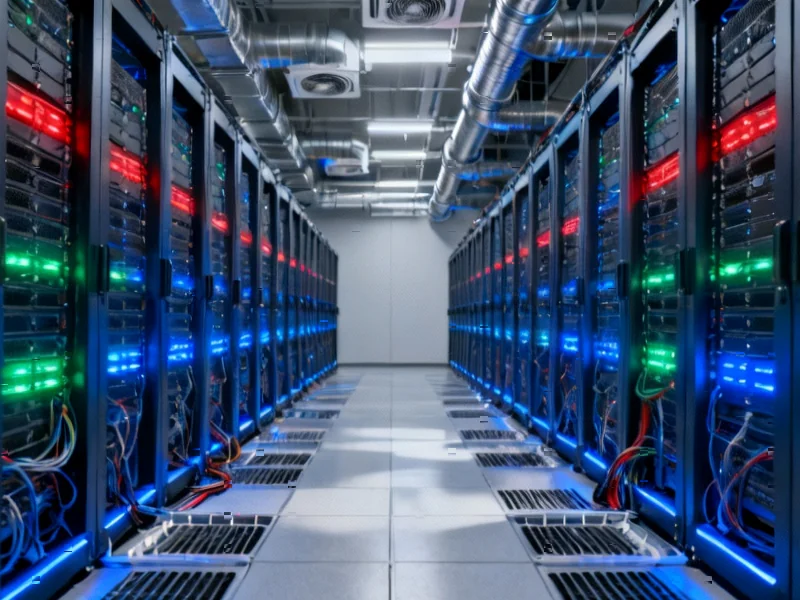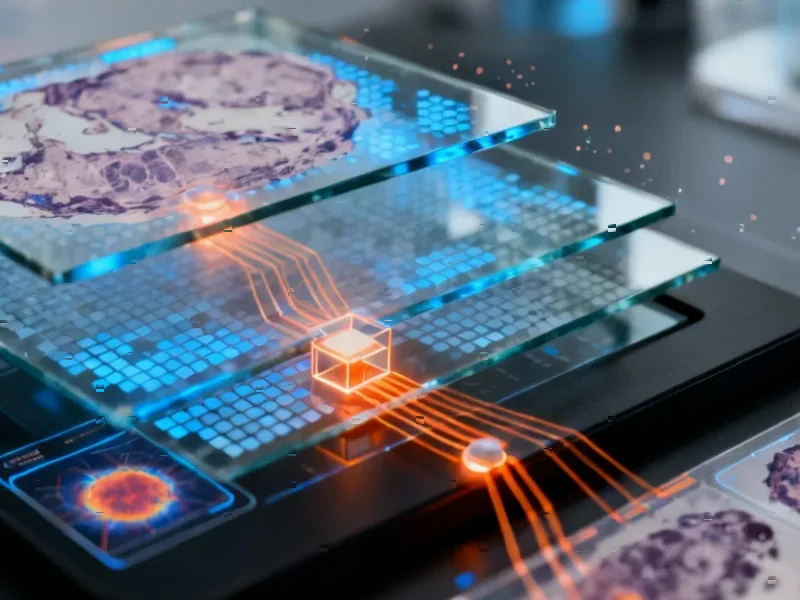According to TechSpot, Nvidia and Samsung have announced a partnership to build an “AI megafactory” featuring a cluster of 50,000 GPUs designed by Nvidia. The facility aims to enhance chip manufacturing for mobile devices and robotics, with Nvidia adapting its designs to Samsung’s lithography platform for a claimed 20 percent performance uplift. Nvidia CEO Jensen Huang met with Samsung Chairman Lee Jae-yong and Hyundai Chairman Chung Eui-sun prior to the announcement, while Nvidia’s Asia-Pacific senior vice president Raymond Teh confirmed the company aims to support South Korea’s AI deployment plans. This collaboration comes as Nvidia partners have booked $500 billion worth of GPU orders for Blackwell and upcoming Rubin architectures. The partnership represents a significant strategic alignment between two tech giants.
The Foundry Challenge: Samsung’s Uphill Battle
While the partnership announcement sounds impressive, it glosses over Samsung’s fundamental challenges in advanced semiconductor manufacturing. Samsung Foundry has consistently lagged behind TSMC in process technology and yield rates for cutting-edge nodes. The company’s 3nm and 4nm processes have suffered from lower yields and performance issues compared to TSMC’s equivalent nodes, which is precisely why Nvidia currently relies on TSMC for its most advanced GPUs. The promise of 20 percent performance uplift through closer technological cooperation sounds optimistic given Samsung’s historical manufacturing challenges.
Nvidia’s decision to work with Samsung represents both a diversification strategy and a calculated risk. With TSMC’s advanced packaging capacity stretched thin and geopolitical tensions surrounding Taiwan, Nvidia needs alternative manufacturing partners. However, adapting Nvidia’s complex GPU architectures to Samsung’s manufacturing platform isn’t a simple task. The transition could involve significant engineering overhead and potential performance compromises that aren’t being discussed publicly.
Geopolitical Dimensions and Supply Chain Vulnerabilities
This partnership carries significant geopolitical implications beyond the technical collaboration. South Korea’s positioning as an AI manufacturing hub represents a strategic move to counterbalance China’s influence and reduce dependency on Taiwan-based TSMC. The South Korean government’s ambitious AI deployment plans, mentioned in the announcement, align with broader national security and economic competitiveness goals. However, this also creates new vulnerabilities—South Korea remains within range of North Korean missile threats and faces its own regional tensions.
The timing is particularly noteworthy given recent export controls and semiconductor restrictions affecting China. By establishing a major AI manufacturing presence in South Korea, Nvidia potentially creates a more geopolitically stable supply chain for serving global markets while navigating complex trade restrictions. Yet this also concentrates risk in another geopolitically sensitive region, creating what some analysts might call “putting all your eggs in a different basket.”
The $500 Billion Question: Economic Sustainability
The staggering $500 billion in pre-orders for Blackwell and Rubin architectures raises serious questions about AI infrastructure economics. This figure suggests either massive over-ordering by hyperscalers or expectations of unprecedented AI adoption rates that may not materialize. History shows that technology investment cycles often feature boom-and-bust patterns, and the current AI infrastructure gold rush could face a painful correction if adoption doesn’t match expectations.
More concerning is the capital intensity of this partnership. Building and maintaining a 50,000-GPU cluster represents billions in ongoing operational costs beyond the initial hardware investment. The energy consumption alone would be substantial—a single H100 GPU can consume up to 700 watts, meaning this cluster could require 35 megawatts of continuous power, equivalent to a small city. The environmental and economic sustainability of such massive AI infrastructure deserves more scrutiny than the optimistic partnership announcement provides.
Shifting Competitive Dynamics
This partnership fundamentally alters the competitive landscape beyond the obvious Nvidia-Samsung relationship. For Samsung, this represents an opportunity to leverage Nvidia’s Omniverse platform and AI capabilities to improve its own chip manufacturing processes—essentially using AI to build better AI chips. However, this creates potential conflicts with Samsung’s other foundry customers, who might worry about proprietary manufacturing insights being shared with Nvidia.
For the broader industry, this collaboration could accelerate the vertical integration trend in semiconductor manufacturing. Companies are increasingly bringing chip design and manufacturing closer together, as evidenced by similar moves by other tech giants. While this promises performance benefits, it also risks creating more proprietary, closed ecosystems that could limit competition and innovation in the long term.
Execution Risks and Timeline Realities
The absence of detailed timelines and specific technical milestones in the announcement suggests this partnership remains in early stages. Building and optimizing a manufacturing facility of this scale typically takes years, not months. The integration of 50,000 GPUs into a cohesive manufacturing workflow presents enormous software and systems integration challenges that neither company has fully addressed publicly.
Previous attempts at similar large-scale AI manufacturing collaborations have faced significant delays and scope changes. The promised performance improvements and manufacturing enhancements depend on successful execution across multiple complex domains—hardware integration, software optimization, and process engineering. Any delays or technical hurdles could push meaningful results well beyond market expectations, potentially disappointing investors who are betting on rapid AI infrastructure deployment.




